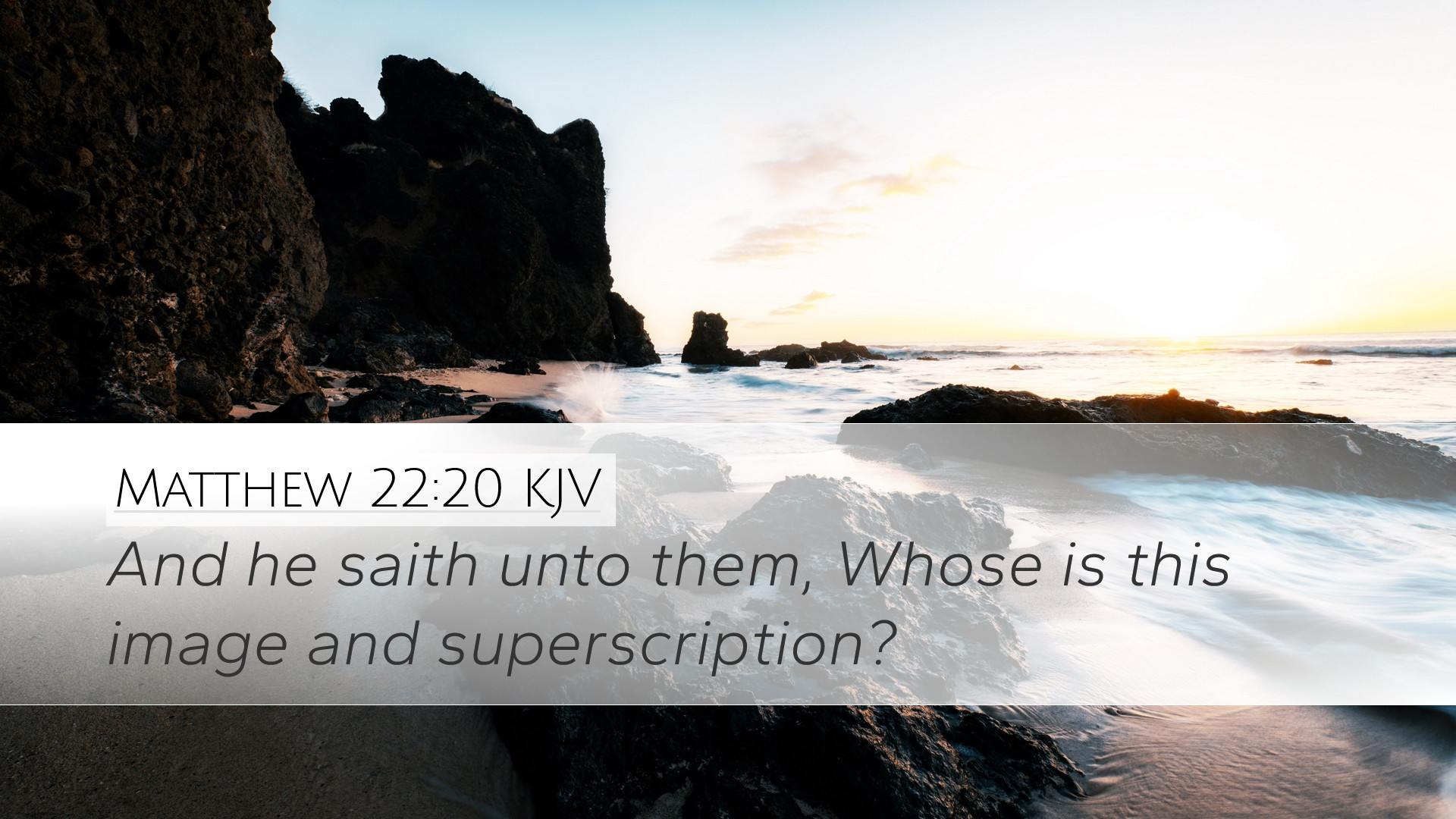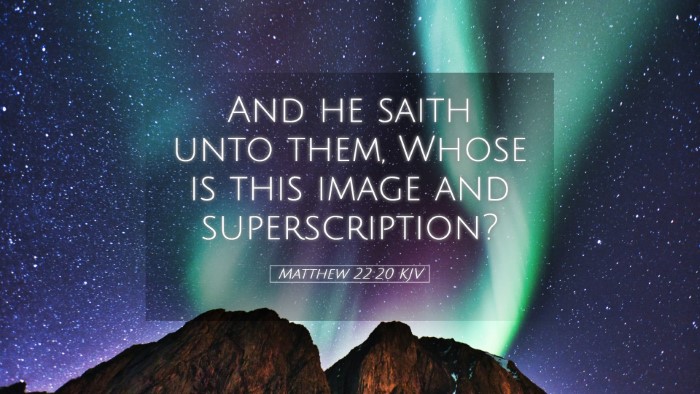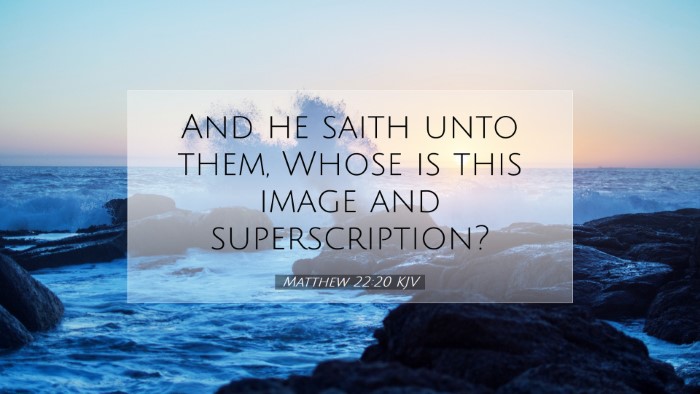Commentary on Matthew 22:20
Matthew 22:20 states:
"And he said unto them, Whose is this image and superscription?"
Context and Overview
This verse is situated within a larger narrative in which Jesus is confronted by the Pharisees and Herodians, who seek to trap Him with questions about paying taxes to Caesar. The question aimed at entangling Jesus in a political and religious dilemma highlights the tension between secular authority and divine obligation. Understanding this environment is crucial for appreciating the depth of Christ’s response.
Historical Background
- Political Climate: At the time of Jesus, Judea was under Roman occupation. The imposition of taxes was a source of discomfort for many Jews who considered it a symbol of oppression.
- Religious Implications: Paying taxes, particularly to a Gentile ruler, posed a dilemma for the Jewish populace. It raised questions concerning loyalty to God versus submission to worldly authority.
Commentary Excerpts
Matthew Henry’s Commentary
Matthew Henry emphasizes the skillful manner in which Jesus addresses the malicious questioning from His adversaries. He points out that Jesus's inquiry about the image and inscription on the coin reveals the divine principle of rendering to authorities their due, which Henry frames as an acknowledgment of civil governance.
Albert Barnes’ Notes on the Bible
Barnes draws attention to the significance of the image on the coin, which was a denarius featuring the likeness of Caesar. He explains that this feature symbolizes the Roman Empire's dominion. Barnes elucidates that by acknowledging this, Jesus indicates that while earthly authorities have their rightful place, they must not overshadow one's ultimate allegiance to God.
Adam Clarke’s Commentary
Clarke provides historical context regarding the currency in use during Jesus's time, explaining the implications of the “image” in Judaic culture. He marks that Jewish law strictly forbade graven images and thus paying the tax with a Roman coin could be seen as a violation of religious principles. Clarke notes that this discussion reveals the greater principle of how believers should navigate their practical obligations in a secular world without compromising their spiritual convictions.
Theological Implications
This verse invites theological reflection on the interplay between faith and society. It raises questions regarding:
- The Nature of Authority: Recognizing God's sovereignty over all aspects of life while also understanding the role of government and civil duties.
- Discipleship in Context: How Christians can balance their responsibilities as citizens of earth while being citizens of heaven.
- Render unto God: The necessity of discerning what it means to surrender oneself and one's duties to God beyond just financial obligations.
Practical Applications
For pastors and theologians, this passage serves as a powerful reminder to instruct congregations on the importance of civic engagement and moral responsibility in a society that often contradicts biblical values.
Students and scholars can take this verse as a starting point to engage with themes such as:
- Christian Ethics: How to apply scriptural principles in societal roles, including the role of government.
- The Challenge of Dual Citizenship: The balance of living as a committed believer while actively participating in societal structures.
Conclusion
In summary, Matthew 22:20 serves as a profound inquiry from Jesus, challenging us to contemplate the implications of authority in our lives as believers. By examining this verse through the insights of historical commentaries, we glean a rich understanding of the need for faith-filled interaction with our civic obligations, ultimately reflecting our primary allegiance to God above all.


